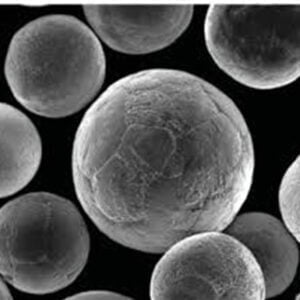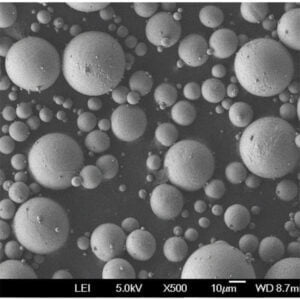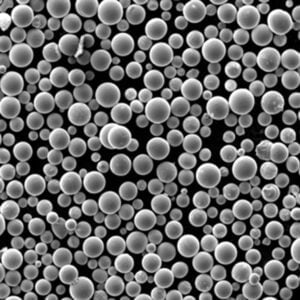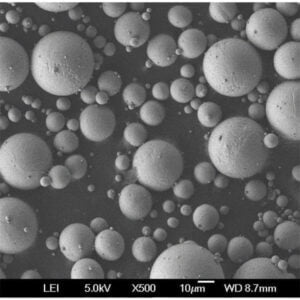耐火合金の紹介
目次
耐火合金 は、数多くの高温用途で重要な役割を果たす魅力的な材料である。耐火合金は、航空宇宙、原子炉、高度な製造工程で見られるような過酷な環境に耐えるように設計されています。この包括的なガイドでは、耐火合金の世界を掘り下げ、その種類、特性、用途などについて説明します。
耐火合金の概要
耐火合金は、非常に高い融点を持ち、高温での摩耗、腐食、変形に強い金属です。これらの特性は、材料が過酷な条件にさらされる工業的・技術的用途において、非常に貴重なものとなっています。
耐火合金の主要特性
- 高融点:通常2000℃以上
- 高温での強度:高温での機械的完全性の維持
- 耐摩耗性:高い耐摩耗性
- 耐食性:過酷な化学環境にも耐える
- 熱安定性:温度変化による伸縮が少ない
一般的な耐火合金
以下に、耐火合金の金属粉末モデルを、その主な組成と特性とともに紹介する:
| 合金 | 構成 | 融点 | 密度 | プロパティ |
|---|---|---|---|---|
| タングステン(W) | 純タングステン | 3422℃ | 19.25 g/cm³ | 最高融点、高密度 |
| モリブデン (Mo) | 純モリブデン | 2623℃ | 10.28 g/cm³ | 高い熱伝導性、優れた強度 |
| タンタル (Ta) | 純タンタル | 3017°C | 16.65 g/cm³ | 高耐食性、延性 |
| ニオブ | 純ニオブ | 2477℃ | 8.57 g/cm³ | 優れた超伝導特性、可鍛性 |
| レニウム | 純レニウム | 3186°C | 21.02 g/cm³ | 高融点、良好な耐クリープ性 |
| ハフニウム(Hf) | 純ハフニウム | 2233°C | 13.31 g/cm³ | 優れた耐食性、高密度 |
| ジルコニウム(Zr) | 純ジルコニウム | 1855°C | 6.52 g/cm³ | 低中性子捕獲断面積、耐食性 |
| チタニウム・ジルコニウム・モリブデン(TZM) | Ti-Zr-Mo合金 | ~2600°C | 10.2 g/cm³ | 高強度、高熱伝導性 |
| タングステン重合金(WHA) | W-Ni-Fe/Cu | 2700°C | 17-18 g/cm³ | 高密度、良好な加工性 |
| クロム(Cr) | 純クロム | 1907°C | 7.19 g/cm³ | 高硬度、耐食性 |
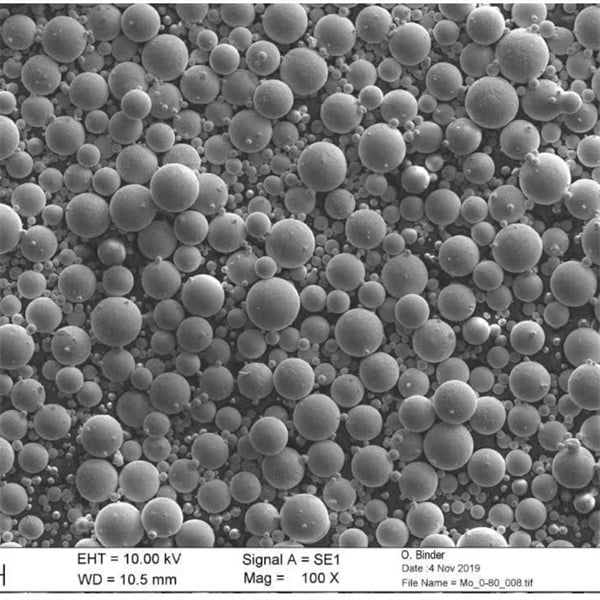
の応用 耐火合金
耐火合金は、その優れた特性により、様々な産業で利用されています。ここに、いくつかの一般的な耐火合金の用途を詳細に示す表を示します:
| 合金 | アプリケーション |
|---|---|
| タングステン(W) | 電球フィラメント、X線管、ロケットエンジンノズル、放射線遮蔽体 |
| モリブデン (Mo) | 炉部品、電極、ミサイルおよび航空機部品 |
| タンタル (Ta) | コンデンサ、医療用インプラント、化学処理装置 |
| ニオブ | 超電導磁石、航空宇宙部品、化学反応器 |
| レニウム | 高温熱電対、ジェットエンジン部品、電気接点 |
| ハフニウム(Hf) | 原子炉制御棒、ロケットノズル、プラズマ切断チップ |
| ジルコニウム(Zr) | 原子炉、化学処理装置、整形外科用インプラント |
| TZM | 航空宇宙部品、タービンの高温ガス経路部品 |
| WHA | カウンターウェイト、放射線シールド、運動エネルギー貫通装置 |
| クロム(Cr) | 酸化防止コーティング、切削工具、ステンレス鋼製造 |
仕様、サイズ、等級、規格
耐火合金は、多様な用途要件を満たすために、様々な仕様、サイズ、および等級があります。以下は、一般的な規格と仕様を示す表です:
| 合金 | 規格/仕様 | サイズ | グレード |
|---|---|---|---|
| タングステン(W) | ASTM B760、MIL-T-21014 | ロッド、シート、ワイヤー | 純、合金 |
| モリブデン (Mo) | アストレムB386、アストレムB387 | プレート、ロッド、フォイル | ピュア, TZM |
| タンタル (Ta) | アストレムB708、アストレムB365 | シート、ロッド、ワイヤー | RO5200、RO5400 |
| ニオブ | アストレムB393、アストレムB394 | 棒、ロッド、シート | R04200、R04210 |
| レニウム | ASTM B662 | ロッド、ワイヤー | ピュア |
| ハフニウム(Hf) | ASTM B776 | ロッド、シート、ワイヤー | Hf 99.9% |
| ジルコニウム(Zr) | アストレムB551、アストレムB550 | シート、プレート、バー | Zr702、Zr705 |
| TZM | ASTM B386 | シート、ロッド、プレート | TZM |
| WHA | ASTM B777、MIL-T-21014 | バー、プレート、ロッド | 様々な作曲 |
| クロム(Cr) | ASTM A739 | プレート、シート、バー | Cr 99.5%, Cr 99.9% |
のメリットとデメリット 耐火合金
高温用途の材料を選択する場合、各選択肢の利点と限界を理解することが極めて重要です。ここでは、いくつかの一般的な耐火合金の長所と短所の比較表を示します:
| 合金 | メリット | デメリット |
|---|---|---|
| タングステン(W) | 極めて高い融点、高密度、良好な電気伝導性 | 脆い、加工が難しい、コストが高い |
| モリブデン (Mo) | 高温での高強度、優れた熱伝導性 | 酸化しやすく、保護雰囲気が必要 |
| タンタル (Ta) | 優れた耐食性、延性、生体適合性 | 高コスト、限られた利用可能性 |
| ニオブ | 優れた超電導特性、耐食性 | 低い硬度、高温での酸化 |
| レニウム | 高融点、優れた耐クリープ性 | 非常に高価で、供給量に限りがある |
| ハフニウム(Hf) | 高耐食性、優れた機械的特性 | 高価で処理が難しい |
| ジルコニウム(Zr) | 低中性子捕獲断面積、良好な耐食性 | 水素脆化しやすく、高コスト |
| TZM | 強化された強度、良好な熱伝導性 | 保護コーティングが必要で高価 |
| WHA | 高密度、良好な加工性 | 高価で、毒性が懸念されるため用途が限られる |
| クロム(Cr) | 高硬度、耐食性 | 脆く、機械加工が難しい |
サプライヤーと価格詳細
の信頼できるサプライヤーを見つける。 耐火合金 は、品質と一貫性を確保するために不可欠です。ここに、いくつかの有名なサプライヤーと一般的な価格詳細が記載された表があります:
| サプライヤー | 提供合金 | 価格帯 | 備考 |
|---|---|---|---|
| H.C.スタルク | タングステン、モリブデン、タンタル、ニオブ | $$$ – $$$$ | 高品質の粉末と合金 |
| プランゼーグループ | タングステン、モリブデン、TZM、WHA | $$$ – $$$$ | 幅広い製品レンジ |
| ATIメタルズ | ジルコニウム、ハフニウム、ニオブ | $$$$ | 特殊用途向けプレミアム・グレード |
| 特殊金属株式会社 | クロム、レニウム、ニオブ、タンタル | $$$ – $$$$ | 幅広い品揃え、カスタム合金も可能 |
| 中西部タングステン・サービス | タングステン、モリブデン、TZM | $$ – $$$ | 競争力のある価格、少量生産 |
| 金属分析 | タングステン、タンタル、ハフニウム | $$$$ | 革新的な製造方法 |
| 先進耐火金属 | タングステン、モリブデン、タンタル、ニオブ | $$ – $$$ | カスタマーサービスが良い。 |
| レニウム合金 | レニウム、タングステン-レニウム合金 | $$$$ |
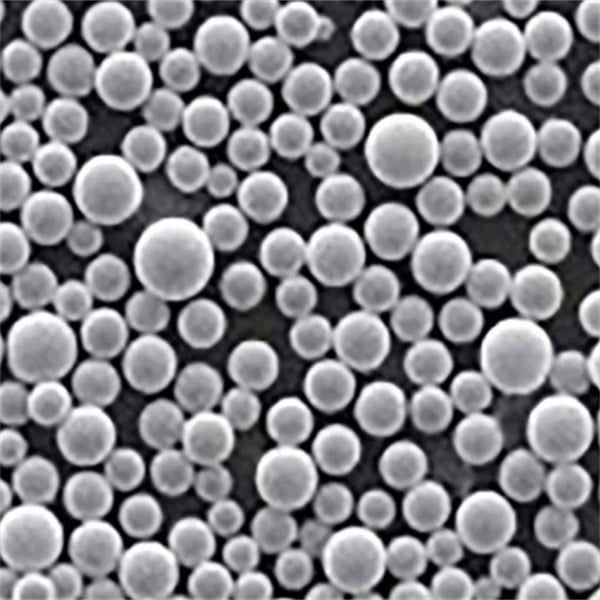
よくあるご質問
Q: 耐火合金とは何ですか?
A: 耐火合金は、融点が非常に高く、極端な温度、摩耗、腐食に対する耐性を持つ金属です。耐火合金は、航空宇宙、原子力、高温製造など、従来の材料では機能しないような産業で重要な役割を果たしています。
Q:用途に合った耐火合金の選び方は?
A: 適切な耐火合金の選択は、使用環境、必要な特性(強度、耐食性、導電性など)、予算の制約など、いくつかの要因によって異なります。材料エンジニアやサプライヤーに相談することで、十分な情報を得た上で決定することができます。
Q: 耐火合金は高価ですか?
A: はい、耐火合金はその特殊な特性と製造工程により、従来の金属に比べてコストが高くなる傾向があります。しかし、その性能と耐久性は、特に信頼性が最優先される重要な用途では、投資を正当化することがよくあります。
Q: 耐火合金はリサイクルできますか?
A: はい、タングステンやモリブデンなど多くの耐火合金はリサイクル可能です。リサイクルは資源の節約、コストの削減、環境への影響の最小化に役立ちます。しかし、これらの合金は融点が高く、化学的に安定しているため、リサイクル工程は複雑です。
Q: 耐火合金の研究開発における新たなトレンドにはどのようなものがありますか?
A: 研究者は常に新しい合金組成、加工技術、耐火合金の用途を探求しています。いくつかの傾向としては、機械的特性の向上、耐食性の強化、3Dプリンティングのような積層造形プロセスに適した合金の開発などがあります。
Q: 耐火合金に関する環境への配慮はありますか?
A: 通常、耐火合金そのものが環境に有害であるとは考えられませんが、原材料の採取や加工、廃棄物の処理は環境に影響を与える可能性があります。このような影響を最小限に抑えるための取り組みとして、持続可能な調達、リサイクルへの取り組み、よりクリーンな生産方法があります。
Q: 耐火合金は医療用インプラントに使用できますか?
A: はい、タンタルやニオブのような特定の耐火合金は、生体適合性と耐食性を備えており、整形外科用インプラントやペースメーカー部品のような医療用インプラントに適しています。これらの合金は強度と耐久性に優れ、医療機器の寿命と性能を向上させます。
Q: サプライヤーから購入した耐火合金の品質を保証するにはどうすればよいですか?
A: 耐火合金を調達する際には、高品質の材料を提供してきた実績のある評判の良いサプライヤーを選ぶことが不可欠です。ISO規格のような証明書や顧客のレビューは、サプライヤーの信頼性を測るのに役立ちます。さらに、材料試験証明書を要求し、受領時に品質検査を実施することで、合金が仕様に適合していることを確認することができます。
Q:耐火合金を扱う上での課題は何ですか?
A: 耐火合金は、硬度が高く、脆く、切削工具と反応しやすいため、加工、製造、取り扱いの面で課題があります。これらの材料を効果的に加工するためには、特殊な設備や工程が必要になる場合があります。さらに、これらの材料は高価であり、入手可能性が限られているため、特定の用途では調達上の課題となることがあります。
Q: 耐火合金を扱う際に、安全上の注意点はありますか?
A: はい、耐火合金の取り扱い、特に粉末や粉塵の状態での取り扱いには、曝露や吸入を防止するための予防措置が必要であり、これが健康リスクを引き起こす可能性があります。適切な換気、個人用保護具(PPE)、安全な取り扱い手順は、職場での潜在的な危険を最小限に抑えるために不可欠です。
シェアする
MET3DP Technology Co., LTDは、中国青島に本社を置く積層造形ソリューションのリーディングプロバイダーです。弊社は3Dプリンティング装置と工業用途の高性能金属粉末を専門としています。
関連記事
Met3DPについて
最新情報
製品

3Dプリンティングと積層造形用金属粉末






